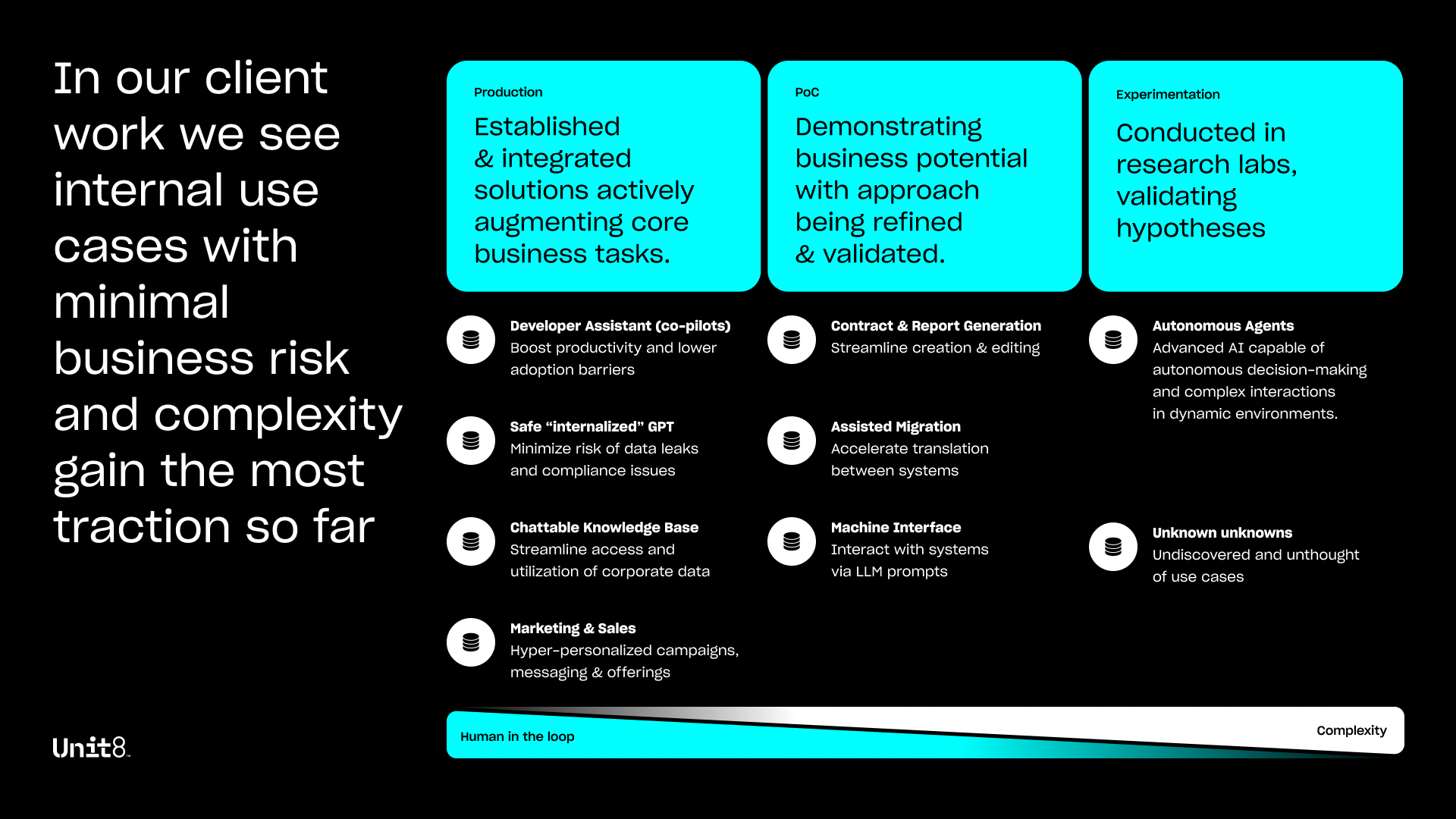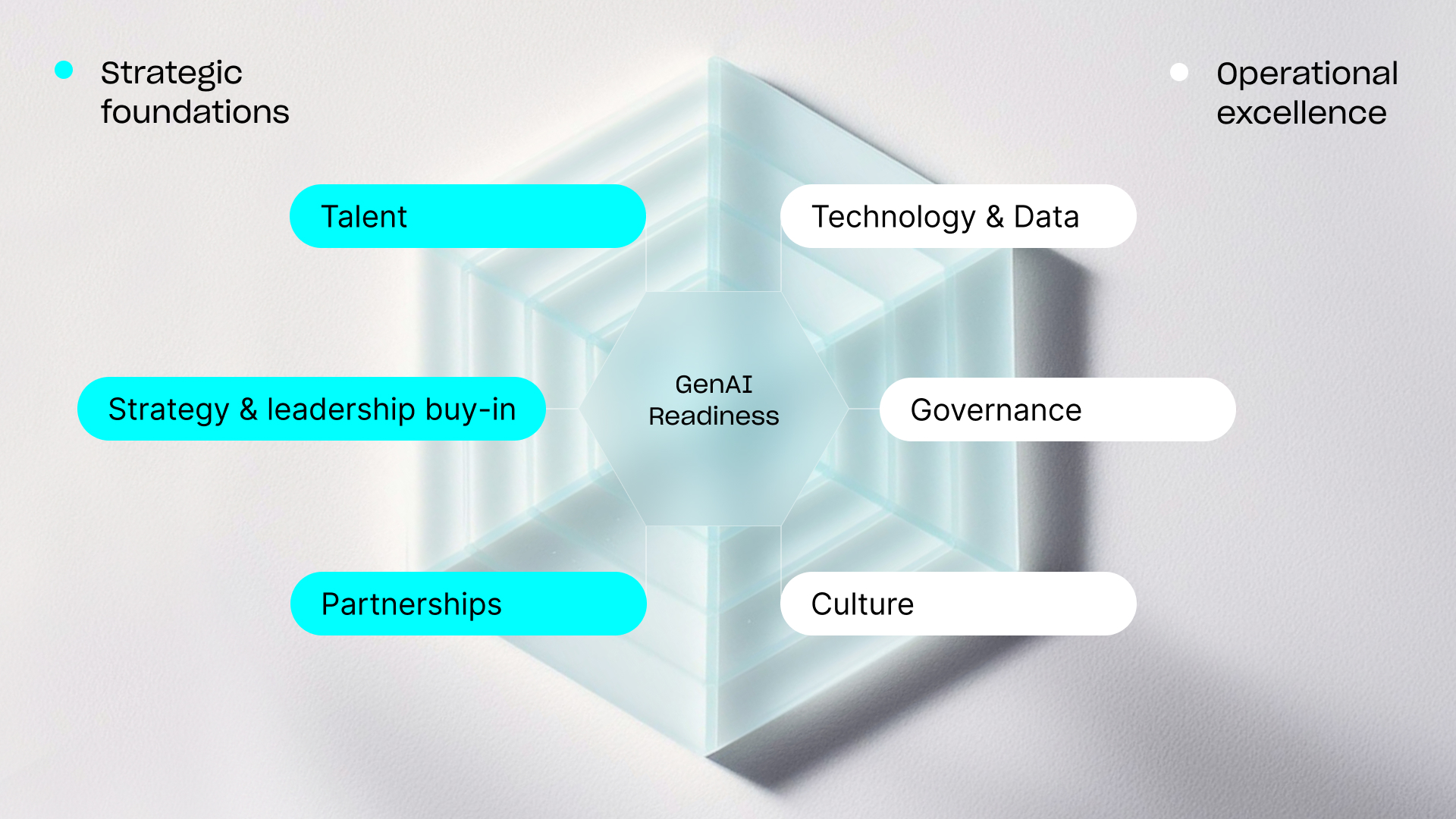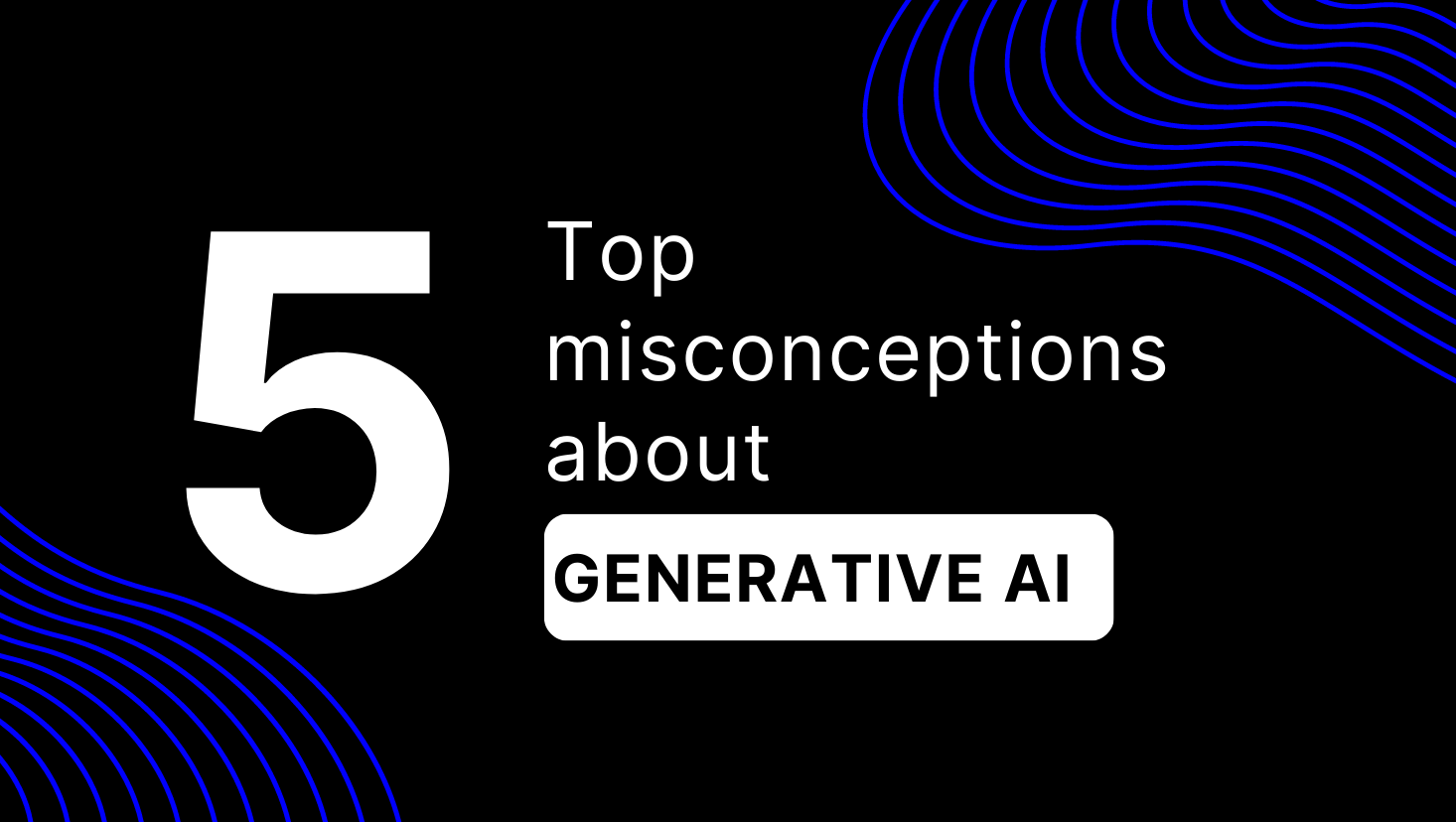
- May 22, 2024
- 8 minutes
-
 Dr Marcin Pietrzyk
Dr Marcin Pietrzyk
In the ever-evolving landscape of technology, the rise of generative AI has brought about transformative possibilities for enterprises across various industries. Enterprises are now faced with the task of preparing for the transformative power that Gen AI holds. However, the journey towards adopting and scaling generative AI within organisations is not without its challenges. Let’s delve into the current landscape and explore the key factors driving the adoption of generative AI in various industries.
The Current Landscape of Generative AI Adoption
As we dig into the world of generative AI, it’s crucial to understand where we currently stand in terms of adoption. Case studies from leading companies like Moderna (1), Mercedes (2), Swiss Re (3), and Air Canada (4) provide valuable insights into the diverse applications of generative AI in the industry context. From deploying chatbots to empowering underwriters and launching customer service solutions, these cases highlight the tangible benefits and challenges associated with integrating generative AI into business operations.
Two cases would deserve a comment:
- According to (4), Air Canada launched a chatbot that provided clients with false reimbursement statements, which resulted in legal proceedings. Interestingly, the ruling says the company must refund clients who acted on the information provided by the bot. This shows the importance of so-called “red teaming”. It is a practice originating in the cybersecurity space. A team of experts purposely attacks the solution before a broader launch to uncover and fix issues and security flaws.
- Moderna case (1) is interesting showing how company is rolling out GPT functions across the functions for a broad range of employees. It is interesting move as it aims at making AI integral part of the job across the departments, which fosters new ways of working and encourages all the employees to embrace AI tools.
Project Categories and Implementation Phases
A closer look at the projects undertaken by us in Unit8 in the past 15 months reveals a diverse landscape of Gen AI applications. From copilots for software engineers to knowledge base interfaces, personalised marketing campaigns, contract analysis, assisted migrations, and human-machine interfaces, showcasing the diverse applications and transformative potential of this technology across various industries.
These projects can be categorised based on their production status, ranging from operational deployments to proof of concept phases and experimentation, with a few stand-out examples:
- Copilots for Software Engineers: Streamlining coding processes and enhancing efficiency in software development workflows.
- Knowledge Base Interfaces: Unlocking corporate knowledge and facilitating streamlined access to internal data for informed decision-making.
- Hyper-Personalized Marketing Campaigns: Crafting customized messaging and content to drive customer engagement and conversions.
- Contracts and Legal Use Cases: Optimizing contract management processes and mitigating risks through AI-powered solutions.
- Interface Enhancement for Machinery: Democratizing access to machinery configurations and optimizing operations through intuitive AI interfaces.
- Exploration into Autonomous Agents: Paving the way for automating tasks and driving operational efficiencies through autonomous agents.

Challenges and Pillars of Enterprise Readiness
Despite the undeniable potential of generative AI, the actual implementation at scale remains a challenge for many organisations. Studies indicate that only a minority of enterprises have successfully transitioned Gen AI use cases into full-scale production. Amongst many of our clients we observe GenAI being a strong catalyst of change. The journey from POC to production involves navigating key pillars of enterprise readiness:
- Strategy and Ambition: Setting clear goals and alignment with organizational strategy.
Arguably, in the long run, AI will change almost any job function. In the short to mid-term, the relevance of AI varies depending on the industry. The importance of large language models, for instance, for a media group will not be the same as for a luxury watchmaking brand. Leadership has to set the tone and high level of ambition for the topic. Fortunately, due to the current hype, we observe a solid C-level buy-in across almost all industries. - Talent & Partnerships: Identifying and bridging skill gaps via strategic partnerships.
The war for talent is on. Exceptionally, few companies will be able to attract and retain all the needed talent in-house; according to several studies, the gap will likely widen. Systematic skill gaps analysis should be performed to assess the scale of the need compared to the strategy and ambition level. In most cases, partnering with external service providers will be necessary to fill the gaps. We recommend building relationships with relevant partners and startup ecosystems. Another important topic to consider is workforce upskilling, as many jobs will evolve; an interesting example from the Moderna case study shows how this can be approached. - Technology Landscape: Navigating the evolving landscape of AI models and supporting infrastructure.
Models and infrastructure needs are very quickly evolving. Race to the top is very heated with ChatGPT, Llama, Gemini, Claude, Mistral and many others. We see also emergence of smaller and specialized models for specific domains. On the other hand, unstructured data are having their big “comeback “ for obvious reasons. New elements of the AI stack are quickly showing up – for instance, guardrails or vector databases are starting to play a role. Companies must stay flexible and quickly adapt to the changing environment while the new AI stack is emerging. - Culture Shift: Embracing agile and lean practices to keep pace with technological advancements.
Many large enterprises have tried historically to minimize risks by a mixture of careful waterfall planning combined with thorough procurement processes. This cautious approach has its merits; the problem is its duration and lack of flexibility. In a world where we have potentially game-changing announcements from tech giants every few months, quick reaction times to changing circumstances are a must. In our opinion, it is better to engage in quick experimentation and learning with agile & lean practices rather than fall back into overly careful planning. - Governance: Prioritizing data quality and flexible infrastructure to support Gen AI initiatives along with ensuring coordinated efforts and optimal implementation across the organization.
Beyond data governance, GenAI itself deserves a degree of central oversight. We see various approaches amongst our clients that might involve establishing a focused CoE (centre of excellence) group or having dedicated program managers who coordinate all the efforts and align them with the C-suit representatives.

Future-Proofing Organizations for Gen AI Evolution
As the technological landscape evolves rapidly, organizations must look beyond current models or technologies and uphold a forward-thinking approach that embraces innovation, collaboration, and adaptability. The likely evolution of AI models, as predicted by Sam Altman in his recent Stanford talk, calls for a proactive approach to future-proofing organizations. By addressing the critical pillars of enterprise readiness and aligning strategic efforts with the transformative potential of generative AI, businesses can pave the way for sustainable growth and competitive advantage in the era of AI-driven innovation.
“…ChatGPT is mildly embarrassing at best. Gpt-4 is the dumbest model any of you will have to use again…by a lot”
“…Gpt5 will be a lot smarter than GPT4, and we are not near the top of this curve…”
– Sam Altman, CEO OpenAI
In conclusion, the journey towards harnessing the full potential of Generative AI involves a strategic blend of vision, talent, technology, culture, data governance, and centralised coordination. Enterprises that proactively prepare for the evolving Gen AI landscape will not only stay ahead of the curve but also drive innovation and transformation within their industries.
(1) https://openai.com/index/moderna/
(2) https://group.mercedes-benz.com/innovation/digitalisation/connectivity/car-voice-control-with-chatgpt.html
(3) https://www.swissre.com/press-release/Swiss-Re-launches-Swiss-Re-Life-Guide-Scout-a-Generative-AI-powered-underwriting-assistant/d0d00d41-755c-4f0b-8bba-95a39b6fc21d
(4) https://techhq.com/2024/02/air-canada-refund-for-customer-who-used-chatbot/




